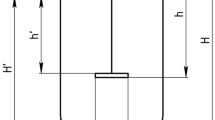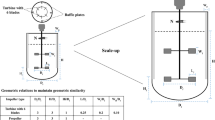Abstract
Analysis of bioreactors is central for successful design and operation of biotechnical processes. The bioreactor should provide optimum conditions, with respect to temperature, pH and substrate condition, for example, besides its basic function of containment. The ability to control the substrate concentration is an important function of the bioreactor. The substrate concentration can be subject to spatial variation – advertently or inadvertently – and may also change with time in batch or fed-batch operation. The cellular metabolism will depend on local concentrations in the reactor, as well as on the physiological status of the cell. In order to understand the bioreactor operation, cellular metabolism must be considered together with the flow profile and the mass transfer characteristics of the bioreactor. Some fundamental aspects of bioreactor operation for yeast and bacterial cultivations are discussed in this short review.
Similar content being viewed by others
Author information
Authors and Affiliations
Additional information
Received and accepted: 19 June 2001
Electronic Publication
Rights and permissions
About this article
Cite this article
Lidén, G. Understanding the bioreactor. Bioprocess Biosyst Eng 24, 273–279 (2002). https://doi.org/10.1007/s004490100263
Published:
Issue Date:
DOI: https://doi.org/10.1007/s004490100263




